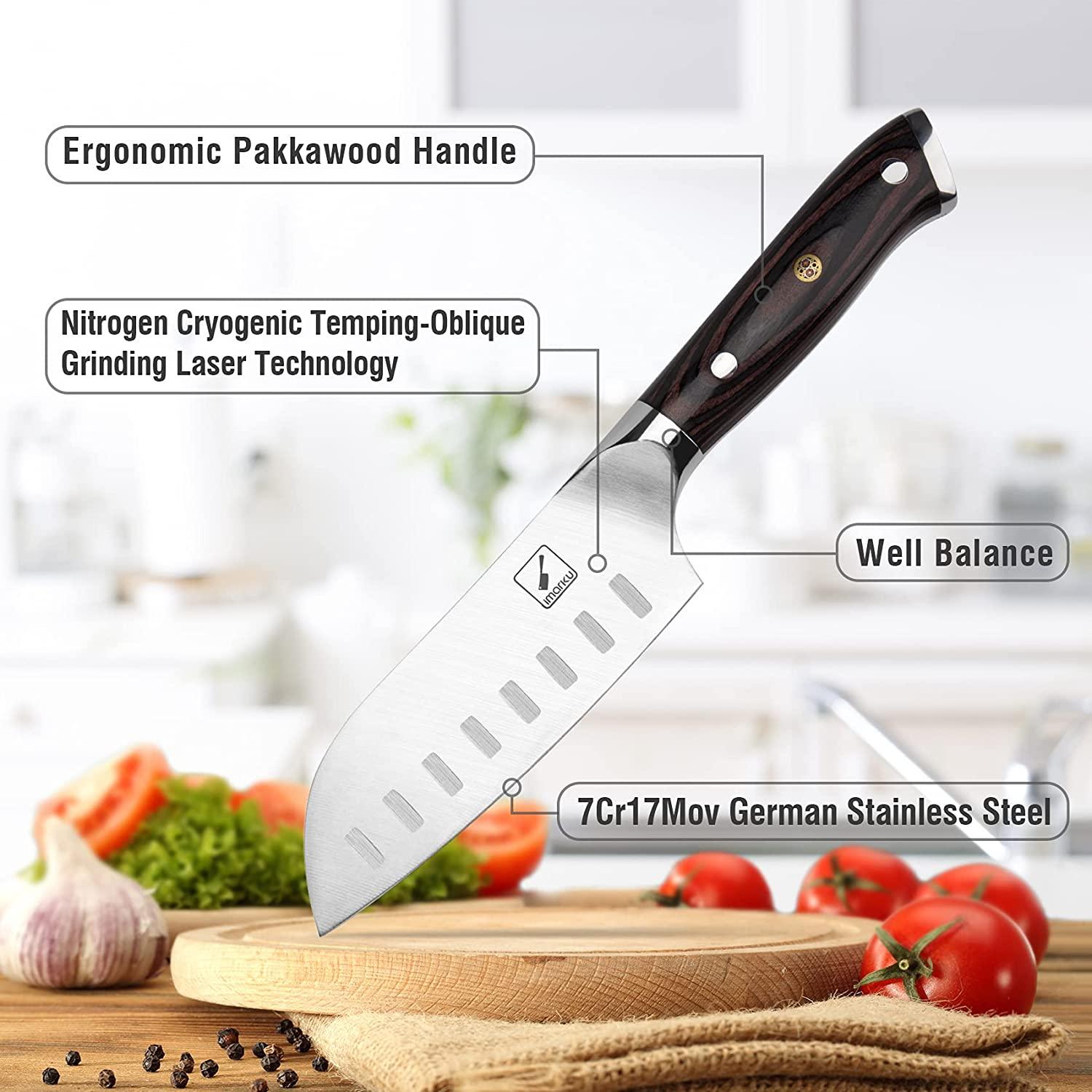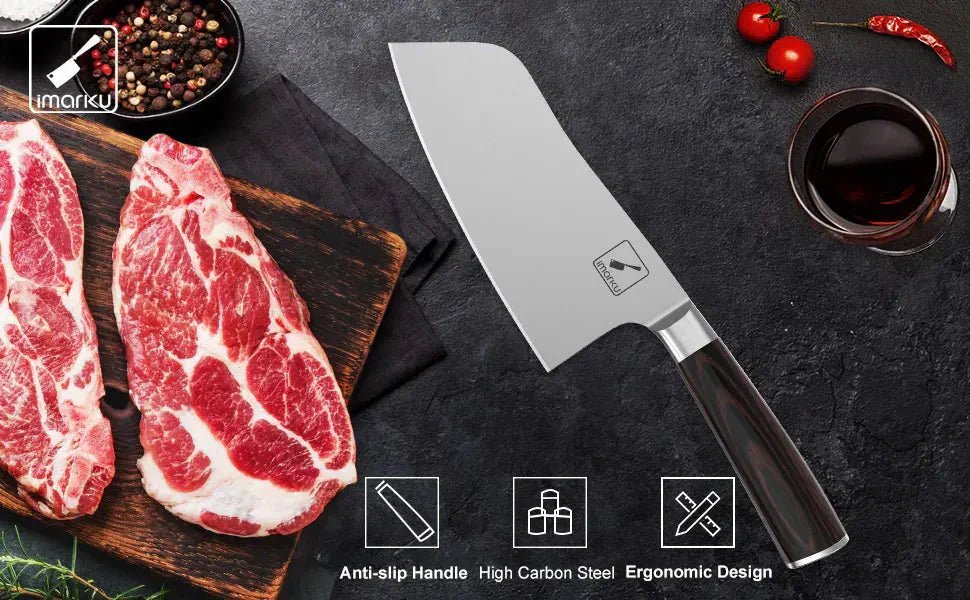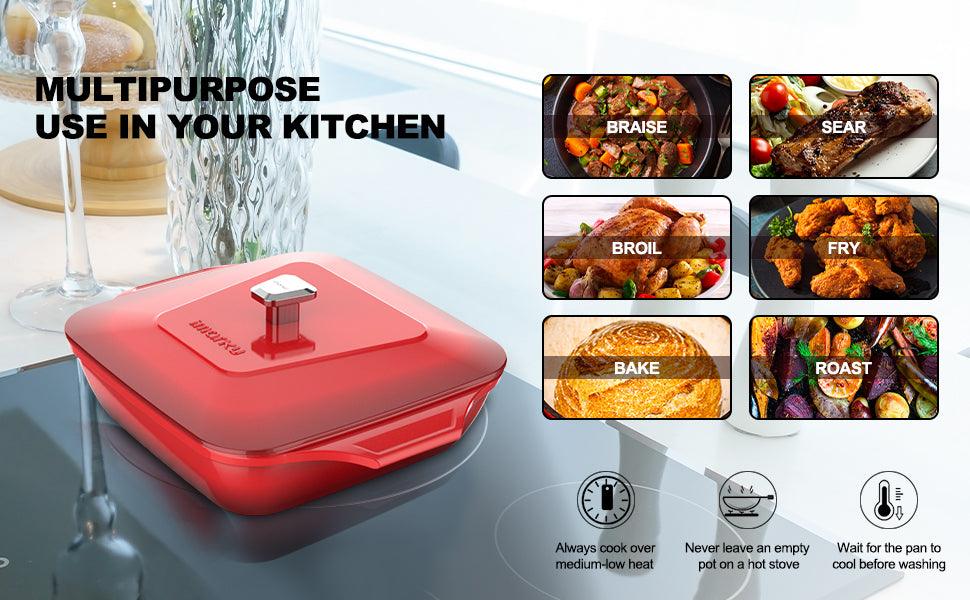TABLE OF CONTENTS
Santoku knives have risen to great fame in the last few years, with a few celebrity chefs going ga-ga over them. These tools are great for your elementary cutting, dicing, and chopping requirements. But what makes them so popular? Let’s find it out.
Contrary to the common chef’s knife, the Santoku knife has a thinner blade but is much harder than regular knives. The blades are constructed from high-quality carbon steel or stainless steel. They are well-balanced and come with scalloped edges so that you can cut anything without it being stuck to the blade.
How did the Santoku knife begin its journey?
The Santoku knife started its journey from Japan precisely after the Second World War. It’s a coalesce of the conventional vegetable knife referred to as the Nakiri together with a Western patterned chef’s knife. The name Santoku roughly translates to the three virtues it is meant for representing. With a Santoku knife, no matter whether you wish to slice, dice, or chop anything, it will assist you in cutting all fruits, vegetables, and meat. The curving in the belly allows to rock it through the fresh spices for mincing them gently. It’s a singled-out construction featuring edge and sharpness.
These knives, originating from Japan, are shorter than their Westernized counterparts and range from 5 to 10 inches in length. The design is such that you get a balanced distribution of weight. The popularity of these knives started growing in the later part of the 20th century. Now, it is found both in the hands of regular users and professional chefs worldwide.
How to choose the best Santoku knife?
The Santoku knife is designed for maximum and versatile usage. This implies you can use it for all your cutting and chopping purposes. Some of the most important aspects to consider while bringing home your first-ever Santoku knife are:
Weight and contour
A good kitchen knife must have the necessary weight so that you can exert strength upon it. Santoku knives thus come with a boxier build that gives these tools additional weight support that a shorter knife may have lacked. Compared to longer knives, the 5 Inch German HC Stainless Steel Santoku Knife has better maneuverability and weighs 0.42 LB. As the blade is shorter, the cutting force gets converged at the blade’s edge, giving you unmatched precision.
Another important thing to watch out for is that the knife should offer a straight cutting edge without a sound point. This will give you a clean slice every time without the pointed tip intervening in the way and reduce the chances of piercing anything undesirably. The shape of the knife is so brilliantly crafted that you can have a clean downward chopping without the cuts getting attached to the blade.
Single bevel
Santoku, like most other Japanese knives, comes with a sharper angle ranging between 12 and 15 degrees along with a single bevel. This implies that the blades are tapered on a single side only. These professionally designed knives have been crafted for producing thin slices and julienne cuts found in traditional Japanese cuisine. The blades are also much wider and allow the user to scoop the food off the chopping board. This also ensures that your knuckles and fingertips are safe, especially when you are doing a fast operation.
Size
The standard Santoku knife is around 5 to 10 inches long, and you can choose one as per your preferences. For individuals with smaller hands, a large knife may not allow them to exercise complete control while cutting or dicing. The size of the knife is also dependent on the kind of tasks you will be undertaking with it. For instance, if you wish to cut hard meat and bones, then you should go for a medium-sized Santoku knife like a 7 Inch Santoku Kitchen Knife, made from German HC stainless steel. They come with a curved front coupled with a gentler tip and ensure your safety and comfort to a great extent.
Sharpness
Perhaps the most important quality of a knife is its sharpness, and when it comes to the Santoku knife, it excels itself. The blade is ultra-sharp and you can rest assured that it will remain intact since the blade is made from high-carbon steel. The scalpel standard sharpness and the retention capabilities make these knives the most effective instrument for creating paper-thin slices.
Ergonomic handle
For boosting the professionalism of the knife while doing away with fatigue, numbness of the finger, and aches from continuous usage, the handle is constructed from Pakka. It is an element found in Africa and highly revered for its strength and comfort. Regardless of whether you prefer a shorter knife or a 10 Inch Chef’s Santoku Knife, the handle would resist moisture, heat, and cold for a lifetime since they are made from military-grade materials.
Strength
When working with a Santoku knife, flexibility is not amongst the top things you should look for. Instead, the knife must have a solid built and a tough blade. You can only get this from blades made of high carbon steel or fully forged stainless steel. Your Santoku knife must appear as if it is hammered to the desired shape from a large steel chunk rather than stamped from a steel sheet. The process of forging adds to the strength of any steel, and thus, it is a preferred trait for your knife. The kinds of techniques you will follow while using a Santoku knife will require the blade to be firmly attached to the handle. As a result, having a double-riveted and full-length blade is a necessity.
Conclusion
When you are looking for a knife for regular kitchen usage, you will realize that the choices are far greater than you may have imagined. While that may be a boon for culinary geeks, sd a daily user, you may be overwhelmed by the choices. Narrow down your choices and think of the purpose you want it to serve. A multipurpose Santoku knife can be the answer to most of your culinary needs.


























Leave a comment
All comments are moderated before being published.
This site is protected by hCaptcha and the hCaptcha Privacy Policy and Terms of Service apply.